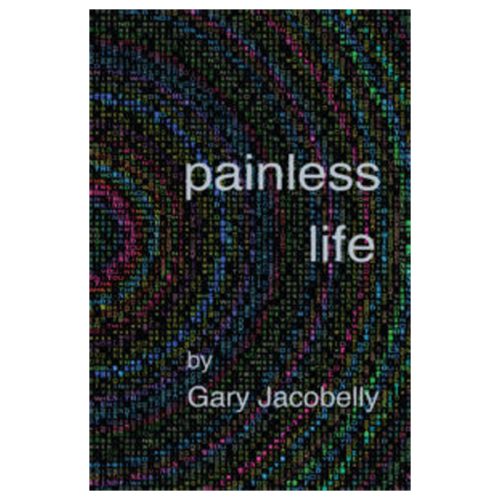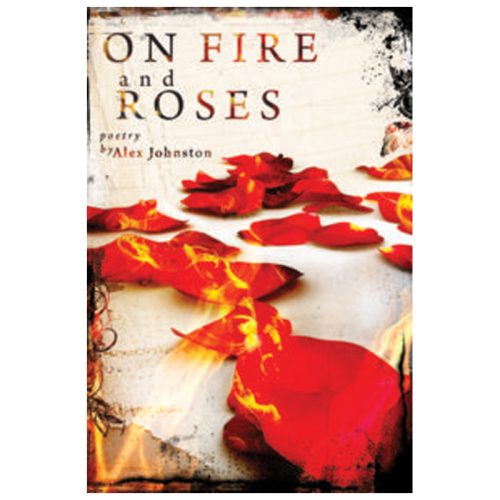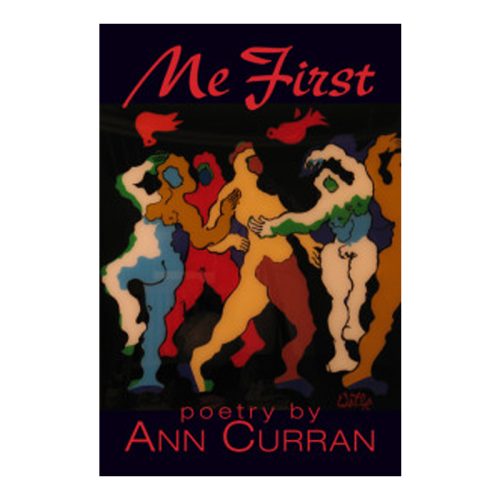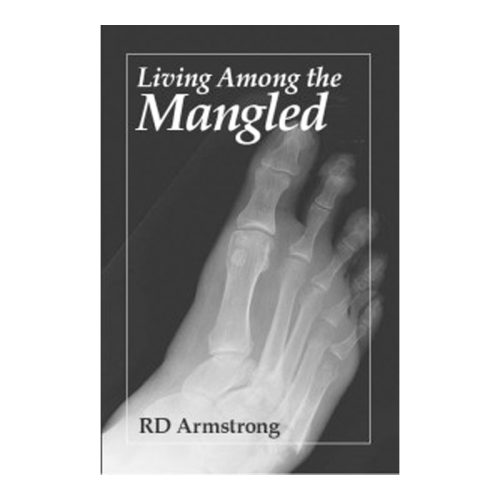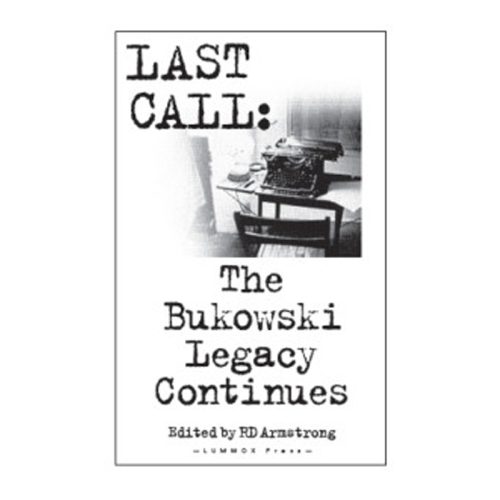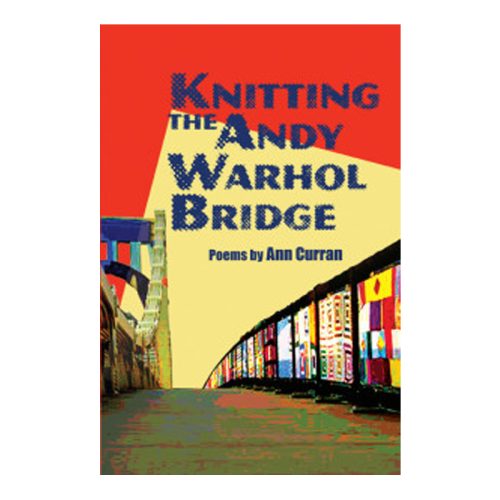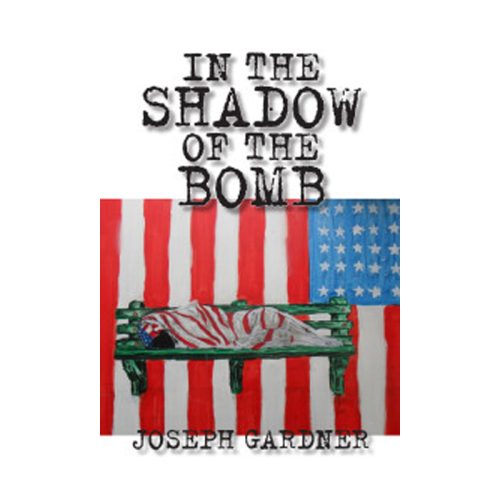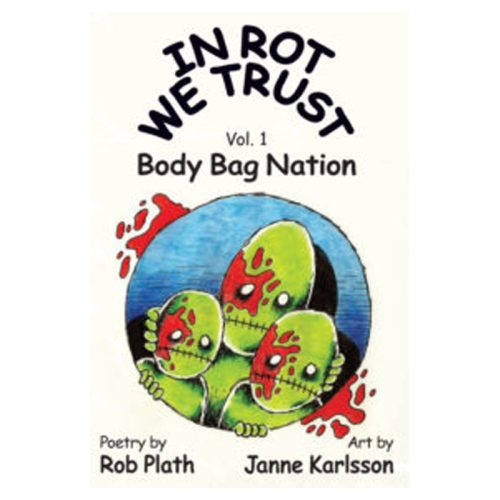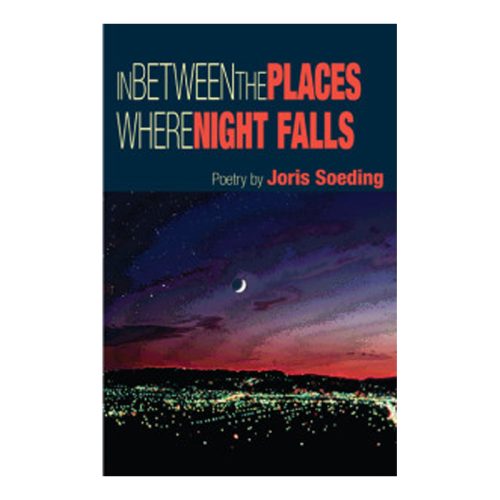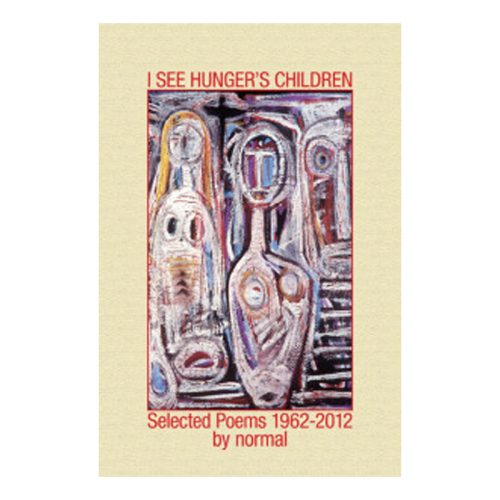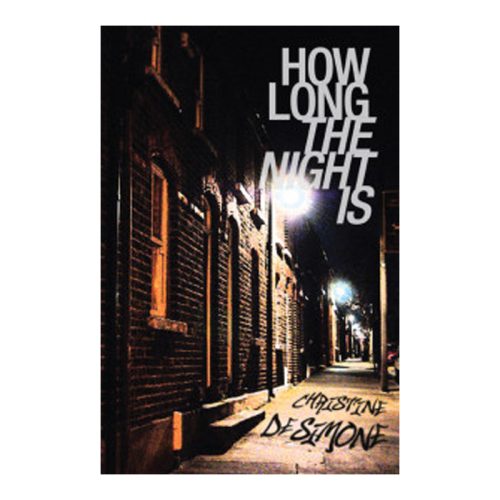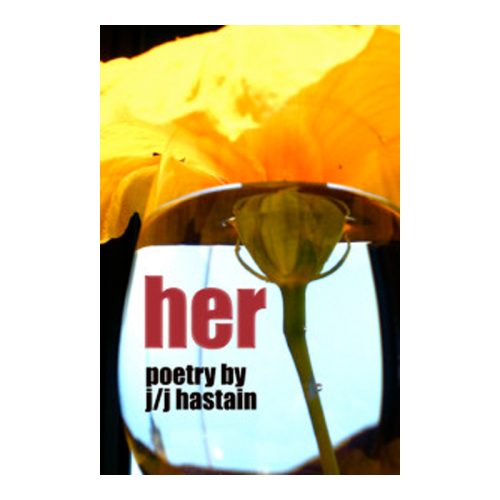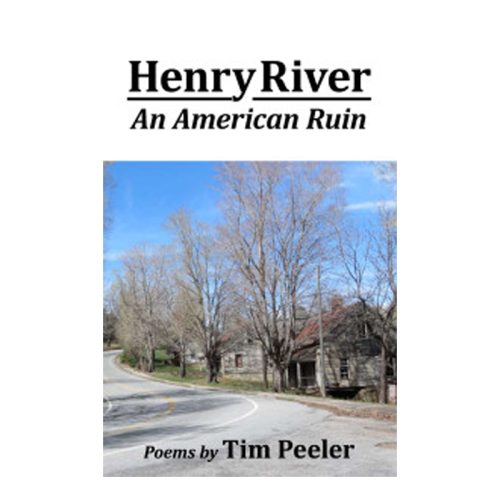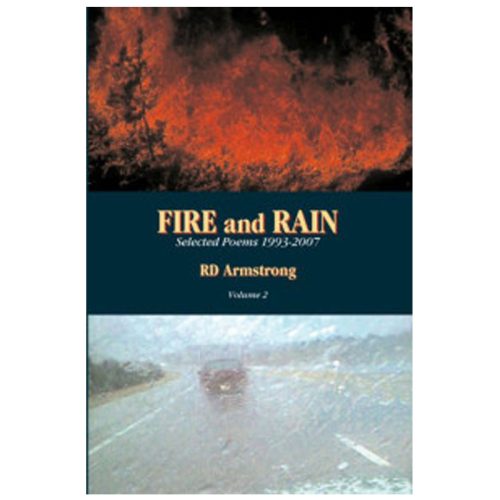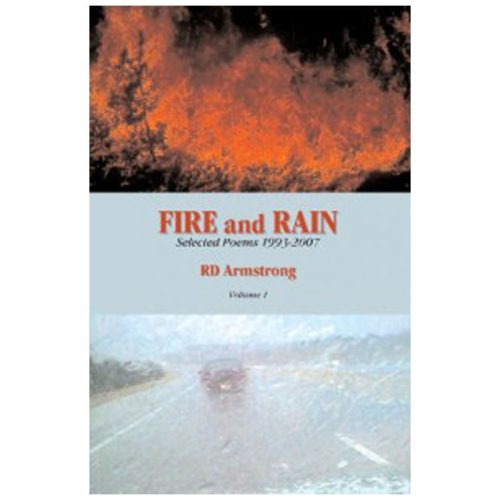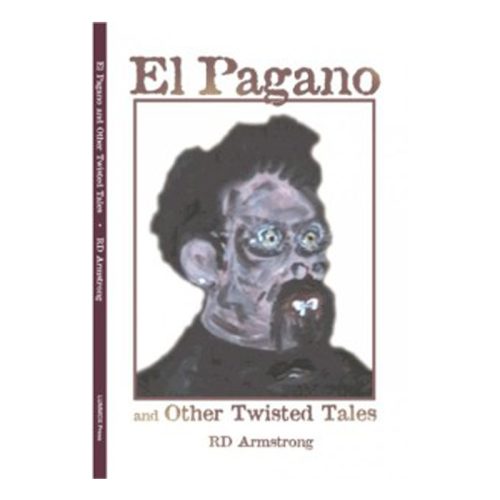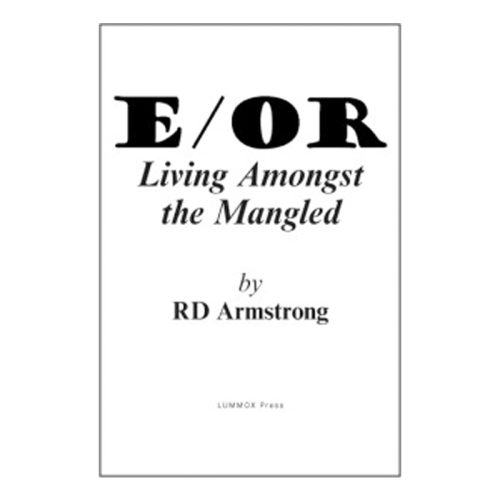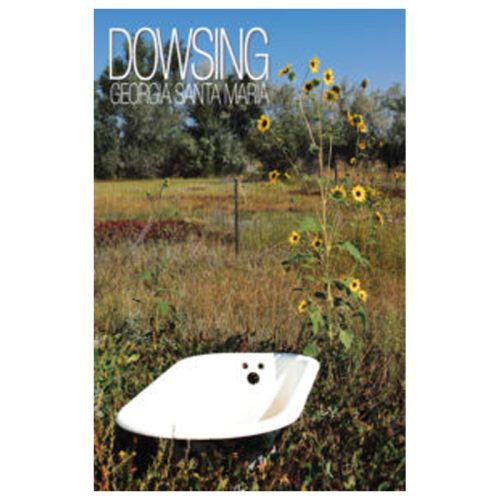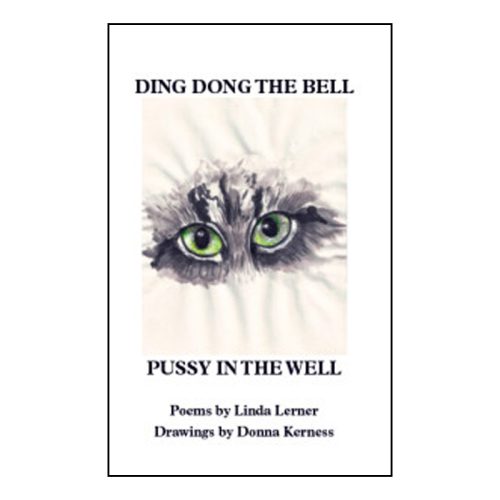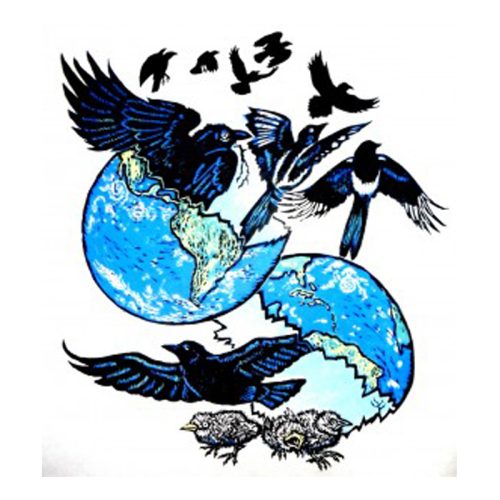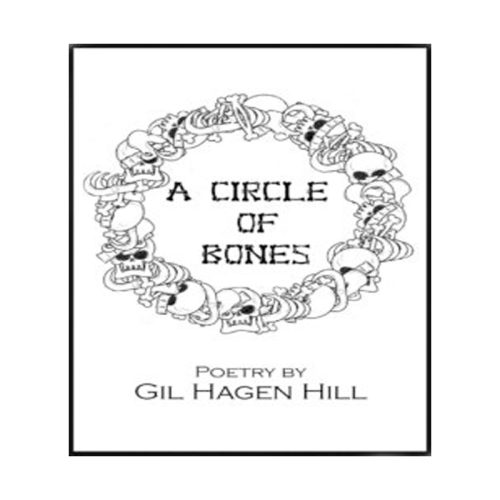-
A collection of poetic "orphans." Poems that had fallen by the wayside because they didn't seem to be anything that anyone would want to have around (hence the "orphan"). The poetry in this collection hopscotches around encompassing the years 1993 to 2016. It represents the forgotten poems from four previous collections: Fire and Rain (Volumes 1 & 2), E/OR and the expurgated version, Living Among the Mangled. Remarkably, many of the poems are still relevant to the concerns that many of us have today. . . perhaps proving that RD is a savvy visionary or (more likely) that the story doesn't change, only the characters do.
-
116 pages; 6X9 sized Trade Paperback ISBN 978-1-929878-99-4
By RD Armstrong
Three poems written about road trips...the lure of the road, the frantic pace of mile upon mile, hour upon hour, the mad rush of the journey between Point A and Point B. Contained in this volume: A Journey Up the Coast; On/Off the Beaten Path; and RoadKill (RD's epic about a 3,000 mile romp undertaken right before Sept. 11, 2001; a 10,000 plus word monster). Ride shotgun with RD as he muses about poets, poetry, friendships forged on hot asphalt and things observed from inside the cockpit of a car hurtling down the interstate at 65 + MPH. -
ISBN 978-0-998458076 108 pages, Trade Paperback
By Alex Johnston
For me, writing poetry is like solving, and then creating a puzzle. I see or experience things I know I want to write about, we all do. Figuring out a way to put those experiences on paper, so as to make them readable, is how one solves the puzzle. Avoiding straightforwardness and balancing on a knife edge, between enigmatic and readability, is how one creates the puzzle. I spent nearly three years revisiting, rewriting and re-getting pissed off at, The October Horse. I reference this poem so much because it is also almost entirely autobiographical (as is most of the book). I trudged through problems with addictions, like so many other 20 somethings, and I was maybe one or two bad decisions away from writing this book in prison (lucky me). The poem is so important to me because even when I was in the total animal soup of time (Ginsberg again!), I knew I wanted to write about that chapter of my life. — Alex Johnston
Read a sampling of poems from this book here. Read an interview with Alex Johnston here. -
ISBN 978-1-929878-44-4 120 pages, 6 X 9, Trade Paperback
Ann Curran has written a book like no other. With a reporter's eye and a poet's vision, she has created a new genre—a poetry of utter frankness. For grief, see the Kennedy poem. For candor, the poem to Maxine Kumin. For accuracy, her lines on "cagey" Seamus Heaney. Whether the subject is the million dollar sale of a bishop's mansion, the Warhol and Ginsberg myths or the "profound" jottings of Kay Ryan and other superficialists, this is poetry at war with fakery on all fronts, and it's as unignorable as it is rare. —Samuel Hazo, director, International Poetry Forum, professor emeritus, Duquesne University. The “me” of these poems celebrates “connecting.” Ann Curran identifies persons and associations that have places in her drama. The voice can be modest, sardonic, even outrageous. Never just chronicler and seasoned by her years as a reporter, no foolishness and no person goes unnoticed. The writer’s wit, balanced by tenderness, makes the reader look forward to each poem. You want to laugh, cry, applaud. You’ll love her authenticity. —Rosaly DeMaios Roffman, professor emerita, Indiana University of Pennsylvania.
Me First Sampler -
132 pages: 6X9 sized Trade Paperback ISBN 978-1-929878-90-1
By RD Armstrong
This is the leaner, meaner fighting weight version of E/OR. All the beautiful pieces with none of the fat. -
ISBN 978-1-929878-53-6 162 pages, 6 X 9 inches, Trade Paper
By Alan Catlin
“Let’s ride the angels goodbye.” —Jack Micheline
Just before the bar war to end all bar wars, the girl with an unbreakable heart leaned over the bar, ripped the buttons off her shirt and said, “I don’t need no ink or silicone to prove I’m a 100% Grade A American Babe.” The way she said it seemed more like a statement of fact than an offer or a dare: regardless, no one was inclined to disagree. So the barman was thinking, momentarily distracted before the overhead rail lights were pulled down, long neck Buds hit the back bar bottles and wall to wall chaos ensued: a flash flood of violence taking out everything in its way. If this were an indie movie all these bodies in motion would be slowed to half speed, made into a grotesque ballet, a techno Rave with flickering lights momentarily revealing distorted faces, flexing muscles, a strange, almost beautiful, mise en scene only a 911 call could interrupt, could make complete, with police whistles, drawn truncheons, and Taser light shows; but it wasn’t a movie, only something like real life. Hours after, the blood dries on the hardwood floors, the click of the muted jukebox cycling most played songs, priming the invisible crowds, and an almost suffocating rush of forced wet air as the lifeless night turns into day. The last man standing behind the bar sips his bottomless pint, and cut glass shots, through a short straw, dulled pains slowly ebbing into an alcoholic daze. — Alan Catlin -
Edited by RD Armstrong 150 pages; 6X9 sized Trade Paperback ISBN 978-1-929878-86-4 This is the reprised version, new and improved, and ready to take up the banner dropped by the old man so many years ago (we just celebrated Buk's 93rd birthday in Aug. of 2013). If you ever wondered what Bukowski spawned by his example, then you need to read this book, which contains poetry, fiction, essays and artwork all inspired by the old dog!
-
By Ann Curran
The poems in Ann Curran’s Knitting the Andy Warhol Bridge flash with a quiet brilliance. An adroit wordsmith, Curran turns clever on its head; her poems can become deadly at the least provocation, not to mention funny, dark, illuminating, and often, heartbreakingly sad. Her poems celebrate life in all its sullied glory. No subject escapes her critical gaze: weddings, sports stadiums, parolees sharing a moment, adoption, racism, war, rumors, love, death. Even the penis is fair game for her wit. These poems sparkle with specifics; they dig deep, nudge the reader toward tolerance. “The New Pastor” “urges the faithful/ to open their hearts to different people: the food co-op kid with rings in his nose,/ lips and eyebrows, the Latino next door,/ college students with raucous beer parties,/ even the half-black U.S. president./ Put down the iPod, the Wi-Fi-fed notebook. / See the live people. …Deal with the real.” This timely, remarkable collection deals with the real in a profound and brand new way. It is a considerable achievement and a terrific read. — Alexis Rhone Fancher, poetry editor of Cultural Weekly, author of State of Grace: The Joshua Elegies, and How I Lost My Virginity to Michael Cohen and other Heart Stab Poems
-
252 pages Trade Paper 6 X 9 ISBN 978-1-929878-68-0
By Joseph Gardner
This book of poems was written for people who normally wouldn’t read poetry. Through these stories you are taken on a forty year journey that began during the height of the cold war and carries onto the new millennium; from one side of the country to the other. Nothing is hidden in these words, all the veneer is stripped away to show the beautiful vulgarity that is life and humanity. These poems read like the pink slip the foreman just handed you or the three day pay or quit notice tacked to the door of the apartment. It is the beeping of the repo-truck and the sudden surprise of the electricity being turned off. It is the first kiss, the first fight, and the first divorce. — Timothy Spencer Poems like “Paying Rent,” In the Shadow of the Bomb,” and “Bar Fighting with Mullets,” demonstrate both his matter of fact ethic and his combination of humor and pathos. Gardner can use the same 16-line poem to make you laugh and make you pause for a moment. The geography of Gardner’s imagination is the California of Steinbeck, Woody Guthrie, Bukowski and Tom Waits. Family memories are recounted and childhood heroes populate the poems. The vocabulary is everyday life and Gardner’s objective is to show you the world through his eyes. — Mike “The Poet” Sonksen
-
By Rob Plath and Janne Karlsson
Text by Rob Plath and illustrations by Swedish artist, Janne Karlsson, seems like the work of two cadavers who refused to be dead and so they kicked their way out of their morgue drawers, beat the shit out of the grim reaper, danced on his bones, and then proceeded to scrawl poems and drawings on the cold, silent walls before escaping into the night. Don’t miss this chilling and humorous book filled with the mad graffiti of these two mortal bastards.
For samples go here. Read a review here or this other review -
ISBN 9781929878611 36 pages
By Joris Soeding
In Between the Places Where Night Falls unveils the first years of a relationship. These free verse poems journey through rural Michigan and the Pacific Northwest, eventually leading to the urban backdrops of Chicago, Dubuque, London, Sarasota, and Vancouver. Beauty and grit revolve around two people through a unique voice. — Joris Soeding
Something Like Paris
the doe teeters from Rosehill Cemetery crossing Ravenswood Avenue seeming lost on Mother’s Day, 8:15 a.m. even fog and rain in the corner this scene from a movie except for the city as backdrop you’re asleep in 14E perhaps we’re above Roswell the sky a bit too blue babies silent since take-off the gentleman in 8F with a mustache, sunglasses atop his head, and blue shirt seems distracted, sore, or both the attendant hilarious flight 1156 to Las Vegas shifts for the first time and you awaken, fearful -
ISBN 978-1-929878-80-2 128 pages, 6 X 9, Trade Paperback Normal
I first became aware of the poet normal through Lee Crabtree, then the Fug's keyboard man, in 1963 or '64, at the Peace Eye Bookstore on the Lower East Side. Thirty-five years later I became re-acquainted with his poems. I liked his honesty. I like the "jolt" of reality in these works, and the intensity of images such as the "devil hair of barbed wire',' and "diamonds of light beg forgiveness',' or "a parade of wrinkles." Go forth. normal.— Ed Sanders, poet, musician & activist "...normal is the voice of the homeless, the victimized, the disaffected and the disturbed. These are poems born of the street, of the vagabond heart, the true restless American spirit that Whitman spoke of when he heard America singing. Too often, now, we hear of singing like the dolphins in an Eliot poem, who do not sing for us. normal sings for us, that is, to the poet in us all and we should listen." — Alan Catlin
Hunger's Children Sampler -
ISBN 978-1-929878-42-0 100 pages, 6 X 9, Trade Paperback
In musically charged lyrics, Christine DeSimone takes on the big questions: “Where is the life you want?” and “So how do you do it? Where do you go to begin again?” Her poems travel the globe looking for answers, from a diner in Chatsworth to a Lisbon night that “drops like an exiled heart,” from an “office with no windows,” to the Cliffs of Dover, from Billie Holiday’s deathbed to the “fluorescent gloom” of the Tenderloin. At each stop, DeSimone listens with “dog-whistled acumen / to find what the world is really saying,” rendering all she hears in stark, unflinching detail.— Cheryl Dumesnil, author of In Praise of Falling and Love Song for Baby X
In this, her first full-length collection, Christine DeSimone strikes gold! How Long The Night Is Sampler -
ISBN 978-1-929878-40-6 128 pages, 6 X 9, Trade Paperback
"I wrote her to honor her (the pronoun, the ‘used to’ parts in me), to try and de-toggle something in me, to uphold a previous (yet very necessary) identity while making space in me for new pronouns, new identities. The future tense of the present houses the past in a sweet casing. I want to honor the her in me: the her in her stilettos and pencil skirts, the her who begins to become the land of the Australian outback (with dreadlocks and bare feet), the her that is less her and more something else with that shaved head and those boxers, pants sagging into a plethora of pronouns. All of these deserve honor because all of them are true: all of these are me." — j/j hastain "One of poetry's most bedeviling challenges is to render the ineffable into language.The bolder poets face the difficulty of not only writing about the complex subjects but of writing about those liminal spaces in topics where language does not yet exist. j/j hastain has succeeded here as few yet have in being able to give voice to the unfolding/enfolding complexities of gender and identity." — Eloise Klein Healy, poet & first Poet Laureate of Los Angeles, CA
her Sampler -
ISBN 9781929878703 Perfect Bound 5.5 X 8.5
By Tim Peeler
The ghost town of Henry River is located in the southeast corner of Burke County in the Foothills of the Blue Ridge Mountains in western North Carolina. Built at the turn of the 20th Century, the village, as it is often called now, has been mostly deserted since the 1970’s when, soon after a change in ownership, the mill burned. The brick company store still stands along with twenty or so haggard rent houses that line State Road 1002 as it meanders uphill toward Interstate 40, a little over a mile away. In 2011, a film company chose Henry River as the location for the protagonist’s childhood home in the first Hunger Games movie. Interest in the site sky rocketed. Individuals and tour groups made the location a destination. What had been a popular spot for photographers and those with an interest in local and regional history now became a part of pop culture. The poems in this volume reflect on the historical Henry River with some reference to the intrusive forces of the film industry. Some are responses to photographs; others are based on stories that Henry River natives have shared with me, while some are sheer flights of fancy. All of them, however, share an empathy and reverence for those who lived and worked in Henry River. (continued below).
-
156 pages; 6X9 size; Trade Paperback ISBN 978-1-929878-97-0
By RD Armstrong
Volume two of a two-part set featuring selected poems from 1993 to 2007, including some of RD's 'signature' poems, like "Yardbird Burned", "Sanitized for Your Protection" and "Things I Notice 4". These are poems you might hear him read at one of his many features in the Small Press poetry scene. All the poems in this two volume set were hand picked by RD as his personal favorites. -
210 pages; 6X9 size; Trade Paperback ISBN 978-1-929878-96-3
By RD Armstrong
Volume one of a two-part set featuring selected poems from 1993 to 2007, including some of RD's 'signature' poems, like "Eyes Like Mingus", "Pueblo de las Putas" and "Corazon". These are poems you might hear him read at one of his many features in the Small Press poetry scene. All the poems in this two volume set were hand picked by RD as his personal favorites. -
120 pages; 6X9 sized Trade Paperback ISBN: 978-1-929878-98-7
By RD Armstrong
The stories in this slim volume, reflect the influence of Charles Bukowski, whom RD has read extensively. But as was noted by one of his fans, this collection of short stories "Out Bukowski's Bukowski!" These are tales of extraordinary madness. And while they might appear to be autobiographical, they are not, well not really. RD plays pretty fast and loose with the "facts". Better than a cold shower. — Andrea Kowalski
-
189 pages; 6X9 sized Trade Paperback ISBN 978-1-929878-30-7
By RD Armstrong
Near the end of 2008, RD wound up in an L. A. County hospital for 14 days. He nearly lost his right foot to an infection. It was during that time that he was diagnosed with Diabetes. It was a sobering experience (literally!). This collection of poetry and blog entries describes that time period, from the beginning of 2008 (the drunkard's lifestyle) to the end of 2010 (reformed and living right). It includes everything he wrote about that time...the good, the bad and the horribly ugly! A rough-and-tumble look at health-care for the poor and drunken and the questionable coping methods used to get by. -
ISBN 9781929878635
By Georgia Santa Maria
CONGRATULATIONS TO GEORGIA SANTA MARIA - RECIPIENT of the 3rd LUMMOX POETRY PRIZE...This book is part of the prize.
I was introduced to dowsing by a neighbor in the 1970’s in Miami, New Mexico. It is the ancient art of finding water underground by using two sticks, either green twigs or pieces of wire. In the book, I introduce him in the poem “Dowser”. I watched him use both green elm and unbent coat-hangars. He held them out straight in front of him, and when he was over water, the sticks crossed and bent downward. A person with this skill is called a “water-witch”. My friend had “dowsed” most of the wells in our community over his seventy odd years of living there. He taught me to do it as well, and I can’t explain it, but the sticks turned in my hands spontaneously over the same places they did for him, and I could feel the tug. — Georgia Santa Maria
-
By Linda Lerner
ISBN 978-1-929878-51-2 32 PAGES; TRADE PAPER Linda Lerner, a small press veteran of numerous years, has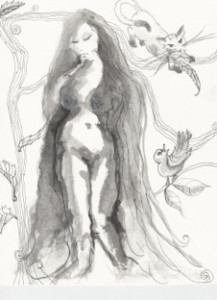 put together a volume of "nursery rhymes" with a distinctly modern interpretation. Along with the drawings of her friend and artist, Donna Kerness, Lerner takes on such classics as London Bridge is Falling Down, Ring Around the Rosy, Jack Sprat, Rip Van Winkle and Humpty Dumpty.
"Poet Linda Lerner pens modern day nursery rhymes, playful but with well-placed poetic barbs, thrown at our everyday insular lives, and the injustices that are ignored by us or experienced by us. Lerner gives us rhyme for our time."
Doug Holder/ Lecturer in Creative Writing/Endicott College/Beverly, MA
CONTENTS
We
What Just happened
Catch Me If You can
The Sound of London Bridges Falling in NYC
Ring Around the Rosy: A Danse Macabre
The Mother Who Gives Birth to a Poem
Remember, remember the Fifth of November
Stumbling on Jack’s Road
An Old Wives Tale or a Rip Van Winkle Story
When Every Color Became Red
Humpty Dumpty
Linda Lerner's Takes Guts & Years Sometimes was published by NYQ Books, June, 2011; she’s previously published thirteen collections of poetry and been nominated twice for a pushcart prize. Her poems have recently been in New Verse News, Gutter Eloquence, The Brooklyn Voice, Danse Macabre, Two Bridges, Presa, Fall, 2011 (featured poet) Lummox, Home Planet News, Big Hammer, and The Mom Egg; her essay "Land Grab: Putting Down Stakes" appeared in The Brooklyn Voice, March, 2013. Her next collection, Yes, the Ducks Were Real, will be published by NYQ Books.
Donna Kerness has been producing Art of various mediums over the years. Her inspirations have emerged from her past... She was a Dancer at the Henry Street Playhouse with Alwin Nikolais, and Murray Louis, a casual fellow poet and friend of Linda Lerner, and an Underground Cinema Super Star, in the movies of the Kuchar Brothers, during the Sixties in New York.
After relocating to San Antonio and raising a family, now is working with Sketching, Drawing, Painting and Multimedia Art which has been exhibited at the Highwire Gallery, in San Antonio, Texas.
put together a volume of "nursery rhymes" with a distinctly modern interpretation. Along with the drawings of her friend and artist, Donna Kerness, Lerner takes on such classics as London Bridge is Falling Down, Ring Around the Rosy, Jack Sprat, Rip Van Winkle and Humpty Dumpty.
"Poet Linda Lerner pens modern day nursery rhymes, playful but with well-placed poetic barbs, thrown at our everyday insular lives, and the injustices that are ignored by us or experienced by us. Lerner gives us rhyme for our time."
Doug Holder/ Lecturer in Creative Writing/Endicott College/Beverly, MA
CONTENTS
We
What Just happened
Catch Me If You can
The Sound of London Bridges Falling in NYC
Ring Around the Rosy: A Danse Macabre
The Mother Who Gives Birth to a Poem
Remember, remember the Fifth of November
Stumbling on Jack’s Road
An Old Wives Tale or a Rip Van Winkle Story
When Every Color Became Red
Humpty Dumpty
Linda Lerner's Takes Guts & Years Sometimes was published by NYQ Books, June, 2011; she’s previously published thirteen collections of poetry and been nominated twice for a pushcart prize. Her poems have recently been in New Verse News, Gutter Eloquence, The Brooklyn Voice, Danse Macabre, Two Bridges, Presa, Fall, 2011 (featured poet) Lummox, Home Planet News, Big Hammer, and The Mom Egg; her essay "Land Grab: Putting Down Stakes" appeared in The Brooklyn Voice, March, 2013. Her next collection, Yes, the Ducks Were Real, will be published by NYQ Books.
Donna Kerness has been producing Art of various mediums over the years. Her inspirations have emerged from her past... She was a Dancer at the Henry Street Playhouse with Alwin Nikolais, and Murray Louis, a casual fellow poet and friend of Linda Lerner, and an Underground Cinema Super Star, in the movies of the Kuchar Brothers, during the Sixties in New York.
After relocating to San Antonio and raising a family, now is working with Sketching, Drawing, Painting and Multimedia Art which has been exhibited at the Highwire Gallery, in San Antonio, Texas.
-
By B. J. Buckley
ISBN 978-1-929878-74-1 100 pages; 6 X 9 inches; Trade Paperback Even a quick glance at YouTube will provide a number of videos demonstrating crows’ ability to solve problems, as well as crows’ ability to play. My favorite shows a crow sliding down a snowy roof, flying to the top again, and repeating the slide. The crow is clearly having a great time, clearly playing. There is no other purpose apparent in the activity. It is simply play. Recently wildlife biologists have begun to understand the inter-species cooperation that seems to exist between wolves and ravens. Ravens, it seems, will find a carcass and then lead wolves to it. The birds know that they cannot get through the tough skin of an elk, but that once the wolves have gotten through the skin, and eaten their fill, they will leave enough meat for the ravens. Biologists have seen ravens fly down into the middle of a litter of wolf pups playing outside their den. The raven will begin to play with the pups, throwing sticks for them or letting the pups chase him. This interaction demonstrates an intelligence and curiosity that extends well beyond instinctive, rote behavior for finding food and shelter. Beyond these specific examples, the Corvids, whether crows, ravens, or magpies, have all played significant roles in world folklore and myth. They are, by turns, bringers of wisdom, harbingers of both good and bad news, or tricksters who can aid a hero or unmask a villain. The rhyme at the beginning of this introduction is an Old English chant recited when seeing a flock of crows. The Norse god Odin had a raven as his companion, and the Haida of the American Pacific Northwest used ravens on their totem poles and created elaborate raven masks. B. J. Buckley’s poems in Corvidae allude to all these attributes and mythologies and more. These poems pay tribute to many of the ways the Corvids have interacted with humans. She uses chants, rhymes, poetic forms, and free verse to create mythology that is both old and familiar and, at the same time, stunningly original. Her poems speak to a reverence for not only the birds themselves but that which is numinous in human experience. Reading these poems changes how we see these beautiful birds, and changes how we see the mystical and spiritual in our lives. These poems should be savored. They should be read aloud to appreciate Buckley’s use of sound, and they could easily be part of personal spiritual practice, read by candlelight or read outdoors where our Corvid relatives may hear them, too, and both laugh in their mocking way and participate in the mystical as they fly across an open sky. An excerpt from the introduction by Jane Elkington Wohl, PhD. Look at a sample copy of Corvidae here -
ISBN 9780999778401 52 pgs. Perfect Bound
By Gil Hagen Hill
The past haunts these highly allusive poems, rich with thoughtful, precise images that convey “numinous ambiguities,” as in the title poem. A Circle of Bones is a welcome addition to 21st-century American poetry. — Clifton Snider


